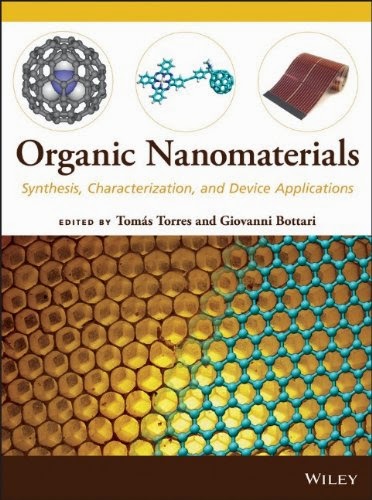Organic Nanomaterials: Synthesis, Characterization, and Device Applications
Organic Nanomaterials: Synthesis, Characterization, and Device Applications
 Organic Nanomaterials: Synthesis, Characterization, and Device Applications by Tomas Torres and Giovanni Bottari
Organic Nanomaterials: Synthesis, Characterization, and Device Applications by Tomas Torres and Giovanni Bottari Discover a new generation of organic nanomaterials and their applications
Recent developments in nanoscience and nanotechnology have given rise to a new generation of functional organic nanomaterials with controlled morphology and well-defined properties, which enable a broad range of useful applications. This book explores some of the most important of these organic nanomaterials, describing how they are synthesized and characterized. Moreover, the book explains how researchers have incorporated organic nanomaterials into devices for real-world applications.
Featuring contributions from an international team of leading nanoscientists, Organic Nanomaterials is divided into five parts:
- Part One introduces the fundamentals of nanomaterials and self-assembled nanostructures
- Part Two examines carbon nanostructures—from fullerenes to carbon nanotubes to graphene—reporting on properties, theoretical studies, and applications
- Part Three investigates key aspects of some inorganic materials, self-assembled monolayers, organic field effect transistors, and molecular self-assembly at solid surfaces
- Part Four explores topics that involve both biological aspects and nanomaterials such as biofunctionalized surfaces
- Part Five offers detailed examples of how organic nanomaterials enhance sensors and molecular photovoltaics
Ebook format: PDF
Ebook page: 627
File size: 150.95 MB
$85.00


Post a Comment